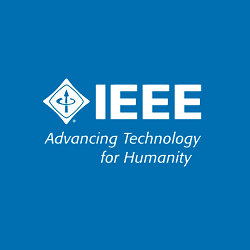دانلود ترجمه مقاله تصمیم گیری برون سپاری فناوری اطلاعات با سرمایه اجتماعی – مجله ACM
| عنوان فارسی مقاله: | تاثیرات سرمایه اجتماعی بر تصمیم گیری برون سپاری فناوری اطلاعات مطالعه موردی شرکت تایوانی با سطح فناوری بالا |
| عنوان انگلیسی مقاله: | The impacts of social capital on information technology outsourcing decisions: A case study of a Taiwanese high-tech firm |
| دانلود مقاله انگلیسی: | برای دانلود رایگان مقاله انگلیسی با فرمت pdf اینجا کلیک نمائید |
| سال انتشار | ۲۰۰۶ |
| تعداد صفحات مقاله انگلیسی | ۵ صفحه |
| تعداد صفحات ترجمه مقاله | ۱۱ صفحه |
| مجله | مجله بین المللی مدیریت اطلاعات |
| دانشگاه | دانشگاه علم و صنعت تایوان |
| کلمات کلیدی | سرمایه اجتماعی، منبع یابی خارجی، مطالعه موردی |
| نشریه | Acm |
فهرست مطالب:
چکیده
۱ مقدمه
۲ پیشینه نظری
۳ روش
۴ مورد
۱ ۴ اثرات اختصاصی بودن دارایی و انتقال سرمایه ی انسانی
۲ ۴ مشارکت روابط تجاری
۳ ۴ تعامل بازیگران گوناگون
۴ ۴ تعادل و سازش
۵ بحث
۱ ۵ اثرات بعد ساختاری سرمایه اجتماعی
۲ ۵ اثرات بعد ارتباطی سرمایه اجتماعی
۳ ۵ اثرات بعد شناختی سرمایه اجتماعی
۶ نتیجه گیری
بخشی از ترجمه:
مقدمه
منبع یابی خارجی فناوری اطلاعات (IT) شیوه ای برای چرخش بخشی یا کل توابع IT سازمان برای ارائه کننده خدمات خارجی می باشد. در دهه ۱۹۹۰ منبع یابی خارجی شهرت زیادی کسب کرد، و با موفقیت هایی نظیر خارجی کردن سیستم های اطلاعات Eastman Kodak تشویق گردید. منبع یابی خارجی IT اغلب به صورت یک قضیه تجاری جذاب جهت رشد و ارتقاء بهره وری ، کاهش هزینه و افزایش بهره وری معرفی شده است. تحقیق گذشته پیرامون منبع یابی خارجی IT از رویکردهای اقتصادی با روشهای به کار رفته نظیر شیوه هزینه معاملاتی و تحلیل ریسک استفاده کرد.اخیراً، نقطه توجه مطالعه به روابط منبع یابی خارجی IT تغییر یافته است. اما، در میان موضوعات IT هنوز زیاد کشف نشده و برای شناخت هر چه بهتر موضوع به روش تجربی، به تحقیقات بیشتری نیاز می باشد. از آنجایی که رفتار منبع یابی خارجی جمع گرایانه و دینامیکی است، در نتیجه روابط منبع یابی خارجی محیطی شکل می دهند که تعاملات یا معاملات انجام می گیرند. این رویکرد به عنوان یک مفهوم اصلی، از اهمیت بسزایی برخوردار می باشد، و بر نقش و تاثیر فعالیت های اقتصادی در روابط اجتماعی مستمر تاکید می کند، به همین خاطر شهرت خاصی کسب کرده است. مفهوم جایگزینی از استدلال های صورت گرفته بر علیه برتری و تقدم مشخصات فردی و بازده های کل تشکیل می شود. این که نفع شخصی را تنها راهنمای عمل بپنداریم نیز متناقض می باشد. در مقابل، بیشتر تحقیقات گذشته به تصمیمات منابع یابی به عنوان یک رویداد مستقل نگاه کرده و بدین طریق سایر روابط اثرگذار بر تصمیم منابع یابی موجود را نادیده گرفته اند.در این مطالعه، ما این گونه استدلال می کنیم که درتحقیق منبع یابی خارجی به منظور نیل به شناخت اشکال غیر رسمی متنوع و گوناگون فعالیتهای اقتصادی مورد نظر در فرایند تصمیم گیری در مورد برون منبع یابی، باید مفهوم سرمایه اجتماعی دقیقاً لحاظ گردد. مخصوصاً، فرض می کنیم تصمیمات منبع یابی خارجی باید در محیط نحوه تکامل شبکه صنعتی و کشف الگوی پیوندهای ارتباطی تکامل یافته با گذشت زمان بررسی شوند.
۶٫ نتیجه گیری
مطالعه انجام شده به مطالعه روابط منبع یابی خارجی IT کمک می کند. اولاً نحوه ورود پیوندهای ارتباطی پیش قرادادی به یک شبکه صنعتی ، و تاثیرات سرمایه اجتماعی بر تصمیم به منبع یابی خارجی ITمشخص شده است. در این رابطه چهار تیپ پیوند ارتباطی، از جمله روابط منابع فنی، روابط صندوق سرمایه، سرمایه انسانی و وابستگی های تجاری به دست آمده است. در مطالعه حاضر ، تاثیر جنبه دینامیکی یک شبکه صنعتی بر فرایندهای منبع یابی خارجی IT و توجه به آنها در تصمیمات اتخاذ شده دراین رابطه ، به تصویر کشیده می شود. ثانیاً ، یافته های حاصله حاکی از آن است که سرمایه اجتماعی به سان شمشیر دولبه ای می ماند که در تسهیل منبع یابی خارجی IT به عنوان یک منبع عمل کرده و از طرف دیگری نقش باری را بازی می کند که عقلانیت تصمیم گیرندگان را از بین می برد.تاثیر منفی سرمایه اجتماعی در این موضوع منعکس شده است که تصمیمات منبع یابی خارجی IT نه تنها بر اساس نیازها و قابلیت های IT ، بلکه بر اساس روابط صنعتی گذشته و فرصتهای اقتصادی آتی اتخاذ می شوند. سوم اینکه شبکه های صنعتی را می توان ساختارهای زنده و موثری در نظر گرفت که شیوه ارتباط بازیگران، فعالیتها و منابع با یکدیگر دائماً در حال تغییر می باشد. علت این امر، پویایی فرایند دینامیکی نیست، بلکه حرکات بازیگرانی است که همواره تلاش می کنند میزان کنترل خود بر فعالیتها، منابع و سایر بازیگران را افزایش دهند.
بخشی از مقاله انگلیسی:
Introduction
Information technology (IT) outsourcing is the practice of turning over part or all of an organization’s ITfunctions to external service providers (Grover, Cheon, & Teng, 1996). Outsourcing became very popular inthe 1990s, encouraged by success such as Eastman Kodak’s externalization of information systems. IToutsourcing is often presented as an attractive business proposition to improve productivity, reduce costs andincrease competitiveness. Previous research on IT outsourcing adopted economic perspectives, with themethods used including the transaction cost approach and risk analysis (Aubert, Rivard, & Patry, 1996;Lacity, Willcocks, & Feeny, 1996). More recently, the focus of-study has shifted to IT outsourcingrelationships (e.g., Kern & Willcocks, 2000; Lee & Kim, 1999). However, it remains the least exploredamong IT issues, and more research is necessary to better understand the subject empirically. As outsourcingbehavior is pluralistic and dynamic by nature, outsourcing relationships form the context in which interactionsor transactions take place (Kumar, van Dissel, & Bielli, 1998). This perspective is especially crucial as theembeddedness concept, which emphasizes the contextualization of economic activities in on-going patterns ofsocial relations (Granovetter, 1985), has gained popularity and is now well recognized. The concept ofembeddedness consists of arguments against the primacy of both individual attributes and aggregateoutcomes; it is also antithetical to self-interest being the sole guide for action (Granovetter, 1985). In contrast,most prior research has treated each sourcing decision as an independent event and thereby disregarded anyprior relationships that might affect the sourcing decision at hand (Nam, Rajagopalan, Rao, & Chaudhury,1996). In this study, we argue that outsourcing research should consider the concept of social capital in orderto understand the diverse informal forms of economic activities encompassed in the outsourcing decisionprocess. More specifically, we posit that outsourcing decisions should be examined in the context of how anindustrial network has evolved and explored the pattern of relational ties which evolved over time. 2. Theoretical backgroundIT outsourcing is broadly understood as an organization’s decision to contract out or sell its IT assets, peopleand/or activities to a third party supplier. In exchange, the vendor provides and manages IT assets andservices for the organization. The arrangement holds for an agreed period of time, and the vendor receivesmonetary returns for its services (Kern & Willcocks, 2000). Conventional theories commonly used to explainIT outsourcing generally take an economic perspective (e.g. the transaction cost theory). This research streamincorporates the theory of institutions into economics, and it generally focuses on efficiency (Williamson,1981). We argue that in addressing the management of outsourcing relationships and partnerships, economicapproaches have failed to address the fact that economies of scale and scope achieved by IT outsourcing mayvary significantly, depending on the environment, structure and strategy factors (Grover et al., 1996). It isnow widely recognized that trust and partnership are critical in the outsourcing process (Lee & K m, 1999). Ina way, the management of partnerships in outsourcing processes has become a main locus for researchers. Tothis end, several scholars (e.g., Burt, 1992) have conceptualized social capital as a set of social resourcesembedded in relationships. For example, Coleman (1990) defined social capital as any aspect of a socialstructure that creates value and facilitates the actions of individuals within the structure. Nahapiet andGhoshal (1998) refers to social capital as the actual and potential resources individuals obtain from knowingothers, being part of the social network among them, or merely from being known to them and having a goodreputation. Previous studies of outsourcing relations have mainly focused on either post-contract relationships (e.g., Kern & Willcocks, 2000) or partnership quality (Lee & Kim, 1999). In addressing IT outsourcingissues, we adopt the social capital perspective for the following reasons: First, good relationships may act assubstitutes for formal institutional support (Xin & Pearce, 1996). This is so given the imprecise nature of theservices being rendered, the difficulty in assuring consistent quality and the often incomplete contractsexisting in IT outsourcing projects. Second, to develop an inter-organizational relationship, an organizationneeds to invest its scarce resources and energy to start and sustain the relationship even when the possiblereturns on the investment may be unpredictable or intangible (Leung, Wong, & Tam, 1995). Social capitalencompasses many aspects of social context, including social ties, trusting relationships and value systems, allof which facilitate the actions of individuals located within the context (Tsai & Ghoshal, 1998). Nahapiet andGhoshal (1998) identify three dimensions of social capital: structural, relational and cognitive. They providejustification on how the attributes of each of these dimensions facilitate the combination and exchange ofresources between firms. The structural dimension of social capital refers to the overall pattern of connectionsbetween actors. The focal point of this dimension includes: presence of network ties; network configuration,which describes the pattern of linkages in terms of measures such as density, connectivity and hierarchy; andappropriable organization, which describes the existence of networks created for one purpose that may beused for another. The relational dimension describes the personal relationships that individuals havedeveloped with each other through a history of interactions. Assets created through relationships such as trustand trustworthiness, norms and sanctions, obligations and expectations, and identity and identification are keyfacts in this dimension. Finally, the cognitive dimension refers to those resources providing sharedrepresentation, interpretations and system of meaning among parties. Table 1 summarizes the major issues,their definitions and some observation needs in terms of the major issues of social capital.
| عنوان فارسی مقاله: | تاثیرات سرمایه اجتماعی بر تصمیمات برون سپاری فناوری اطلاعات مطالعه موردی شرکت تایوانی با سطح فناوری بالا |
| عنوان انگلیسی مقاله: | The impacts of social capital on information technology outsourcing decisions: A case study of a Taiwanese high-tech firm |





